| 1 | Its venom assaults the lungs |
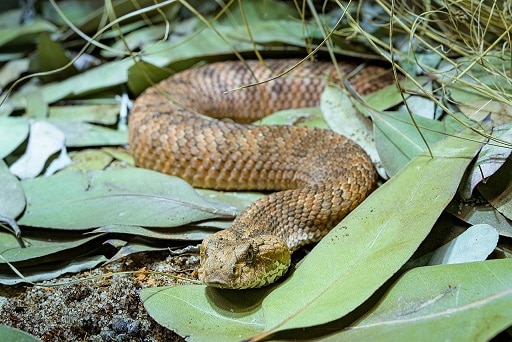
The common death adder isn’t quite the deadliest snake on Australian soil, despite the name. Its venom falls just short of the top in toxicity, with an LD50 rating of 0.6mg compared to 0.025mg for the inland taipan and 0.05mg for the eastern brown snake. However, there are three good reasons why you probably shouldn’t stroke this snake affectionately on a family day out. Firstly, its venom yield is among the highest, injecting 70-236mg of venom compared to 267mg and 44-110mg for the two snakes above.
Secondly, the venom is riddled with neurotoxins, so many that 50-60% of bites were fatal before the dawn of antivenin in 1950. The main cause of death from this species is lung failure, as the neurotoxins sever the connection between brain and lungs and prevent them from inflating and deflating. The neurotoxins also lead to milder symptoms like trouble breathing, trouble speaking and trouble swallowing. One bite victim reported uncontrollably slurred words to the point that his friends couldn’t understand him, despite his mind feeling 100% clear.
Finally, common death adder venom has an unusually long delay factor. Many victims feel fine for 24 hours, before suddenly worsening and requiring hospitalisation on day 2.
| 2 | A patient ambush hunter |
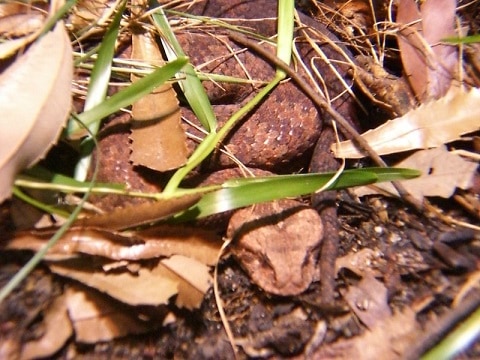
There’s a widespread legend about this species, that it was originally called the “deaf adder” and that this gradually morphed into the death adder. Supposedly, the legend originated from its stationary hunting style, which is so immobile and statue-like that passing European explorers assumed that the snake was unable to hear them.
The truth is that no snake hears in the traditional way (sensing vibrations instead), and the death adder has an unusual response to the approach of its prey. Even most ambush predators begin flicking their tongues and shifting their bodies into position, but a death adder’s first response is to bury itself even deeper into the leaf litter and soil. The sole exception is its tail, which is vertically compressed with very tiny scales that have much brighter colour. While waiting, it moves this tail in a consistent, but extremely slow and mesmerising pattern. This is called caudal luring, and the goal is to trick rodents into thinking they’ve spotted a worm or grub.
Like the puff adder of Africa, death adders can stay by a forest path motionless for weeks at a time, causing many Australians to not notice them.
| 3 | They have a varied diet |
To complete the unstoppable hunter package, the death adder adds in a pair of 6-8mmg fans, averaging at 6.22mm. Their diet is all consuming and can include scurrying rodents, birds in the sky, and even goldfish when in captivity. The most common component of their diet is skinks, a family of small lizards, but the main foodstuff can vary by location and food availability. In eastern Australia near Sydney, one their staples is the common eastern froglet.
In fact, the species is sometimes too unfussy for its own good. In 1980, a female death adder was observed gorging on a razor sharp eastern water dragon (Physignathus lesueuri). The snake’s predicament was clear: the reptile measured 80cm long while its own body measured just 86.5cm.
At first, the death adder swallowed the lizard whole without incident, but later, it fell sick. Its body revealed no obvious diseases or parasites, but the snake tried desperately to regurgitate the lizard inside it. Both attempts failed. Finally, the snake rolled over on its back, convulsed several times, and died, as the lizard’s spines had pierced its digestive tract.
| 4 | Strong like a mountain gorilla |
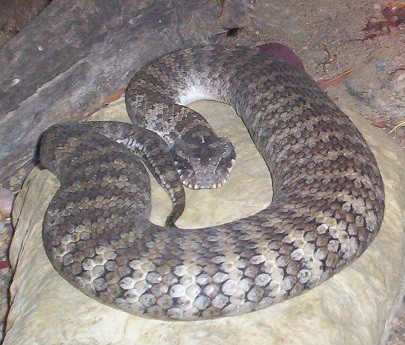
Common death adders are average in terms of length, reaching 40-80cm in adulthood, but the standout feature is their powerful, thick bodies. This musculature is used for jumping on prey, and gives them the fastest known strike of any snake in Australia. In captivity, common death adders are able to jump and grab mice thrown to them from mid-air, without being warned. One captor tried but failed to film this superman grab, as the snake was just too fast.
The only thin part of this snake’s body is its neck. Their head is wide and chunky, and its patterns are non-flashy and typical for blending into the parched Australian countryside. There’s two main colour morphs, with a red grouping in northern and eastern Australia and a a grey grouping in southern Australia. The two colours can be found side by side in some locations like Sydney’s Kurringai Chase National Park, and in both morphs, the stripes are a slightly darker version of their main colour. Common death adders are a round pupilled snake rather than vertical, and in captivity, something strange happens: their scales tend to grow darker.
| 5 | The Victoria mystery |
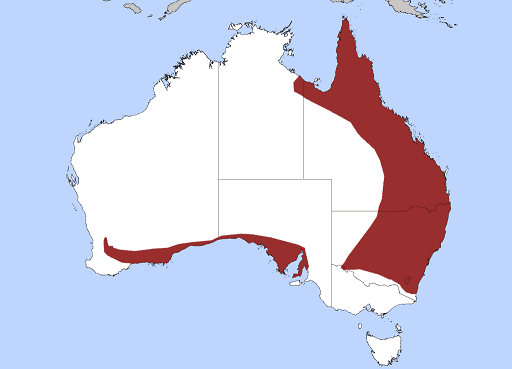
Unlike the inland taipan or pygmy python, this isn’t an outback snake. It’s found in regions with at least moderate annual rainfall, including shrublands, grasslands, forests, and heaths. Its heartland is eastern Australia, with the northeast range hugging the entire coast of Queensland and just stretching across the border into the northern territories. It’s also found across most of the south coast, including the westward areas into West Australia.
That said, there’s been an unsolved mystery for decades now about whether the species inhabits Victoria or not. European explorers published a sketch with a strong resemblance in 1856, and snake expert Peter Menkhorst claimed to have found one on Mellpolla island in northwest Victoria. However, he failed to bring back a dead specimen, and further investigations found nothing. A widely publicised sighting near Albury-Wodonga in 2003 turned out to be a tiger snake, and a sighting just north of the Victoria border in Bondi State Forest was also ruled out.
To this day, there are still no confirmed sightings of common death adders in Victoria, and nobody knows the truth. Outside of Australia, the common death adder is also found on Papua.
| 6 | Assaulted by waves of toad troops |
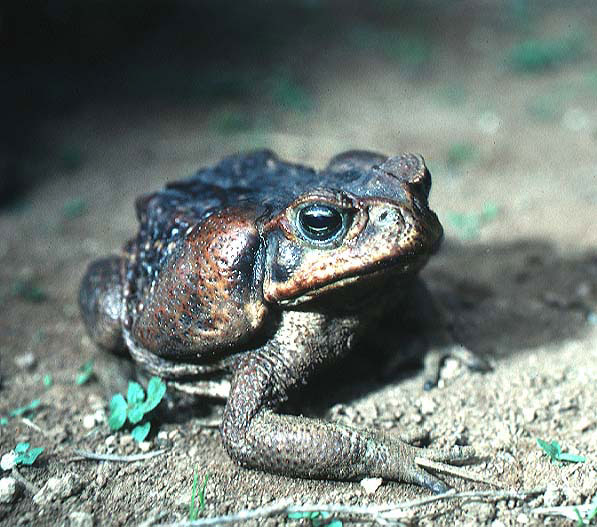
Common death adders are a moderately slow moving snake species, and therefore the simplest way to spot one is by driving around the roads in confirmed hotspots. They’re sometimes seen crossing roads at night, particularly males, which are 10 times more likely to be found on roads than females according to one study. This is caused by their hunger for mating, which forces them to make more adventurous journeys, which is proven by the juvenile sex ratio on roads being almost equal.
Unlike the more remote inland taipan, common death adders often end up as roadkill. The threat isn’t as severe as another though – the invasive cane toad (Bufo marinus) species. This toxin-filled species destroys all species of Australian snake that eat it, with the exception of the red-bellied black snake. The cane toad was introduced in 1935 to control cane beetles, but has wrecked havoc on Australia’s wildlife ever since.
It’s believed that if unchecked, cane toads could occupy the entire north of Australia within decades. The problem is that the two species share a general habitat preference – like the common death adder, the cane toad avoids arid regions and sticks to the moister coasts.
| 7 | Top meteorological skills |
Many snake species can detect the weather via changes in air pressure and humidity, but the death adder’s meteorology skills go above and beyond the rest. Common death adders have a minimum temperature floor below which it’s almost impossible to find them at night. In Sydney, this floor is 24 degrees Celsius, whereas in Brisbane, it’s 26 degrees. Even captive death adders become less active when the outdoor air temperature starts plummeting.
Another time when the common death adder is difficult to spot is at full moon. The improved visibility enables hungry birds of prey to spot them, bird predators which are thought to include the notoriously snake-hungry kookaburra. On fully moonlit nights the common death adder stays still to limit its visibility, whereas in medium moon phases they’re as active as ever.
Meanwhile, the Australian snakes which move about the most under moonlight are those with black and white patterns. Sometimes nature is simpler than you’d expect.
| 8 | Impervious to snake ailments |
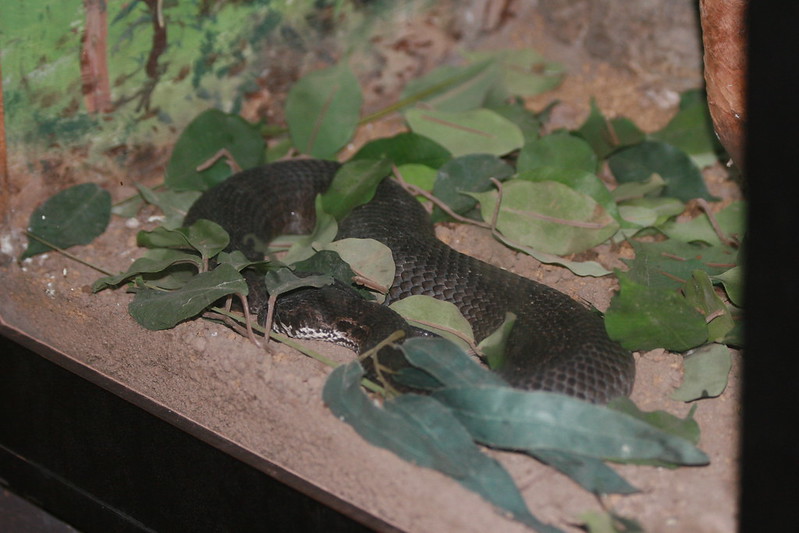
Common death adders are known as a very easy snake to keep in captivity. Once past the potentially bitey first encounter, common death adders lose most of their aggression within the first few days. They have no problem with being moved around with a metal hook, and even adult males rarely fight when paired together, usually ignoring each other instead.
Common death adders are also invulnerable to the typical health problems of captive snakes, including parasites such as mites. The South American bushmaster is the opposite, almost invariably dying within weeks due to parasites picked up in its jungle home turf.
Death adders rarely refuse to eat either, as they don’t require the thrill of the hunt to whet their appetite. Common death adders can be caught with ticks crawling all over their bodies and show no ill effects. One keeper went as far as to call them “impossible to kill“. Their close relative further north, the desert death viper, is slightly different, remaining more aggressive and for longer.
| 9 | Love section |
Male and females of this species are easy to tell apart, as the males have a significantly thicker and longer tail. The females are also slightly larger than the males. This species can mate with each other for days at a time, but sometimes as little as minutes, with the average being hours.
Common death adders have no problem with being photographed while mating. In fact, the females have no problem with eating while mating. Sometimes the males get so sexually excited that they try to mate with other males.
Scientists have found some clear preferences in their studies. Being so closely related, common death adders can breed with the 4-8 other Acanthophis members in Australia, including the desert death adder. However, when placed side by side, the males always instinctively slither to females of the same species first. Males are also less interested in mating when overfed compared to lean and hungry. The species produces an average amount of offspring, being live young instead of eggs, and generally numbering 3-20.
| 10 | Is their doom approaching? |
A special feature of this species is that despite their preference for moister areas with grass, they’re allergic to agriculture. When grassland areas are handed to livestock animals, the common death adder immediately retreats, and they can’t cope with heavy grazing by feral animals either.
This means that since Europeans arrived in the 18th century, the species has significantly retreated in its old ranges, which hasn’t been helped by the cane toad’s arrival. The toad’s partner in crime in the plant kingdom is the prickly pear, an invasive weed which also seems to delete the nearby death adders. The heaviest damage has been done in the southern two thirds of Queensland, where the species only survives in a few isolated pockets.
Another damaging incident happened in the Yorke Peninsula, when the authorities poisoned hundreds of thousands of mice with strychnine. Within weeks, scores of dead common death adders were also showing up, as the poison wracked havoc on animals higher up the food chain. Acanthophis antarcticus is listed as “least concern” in IUCN’s register, but may be in more trouble than people think.
